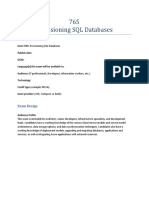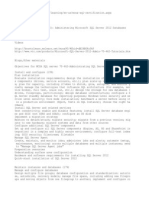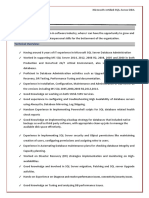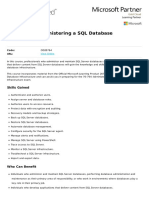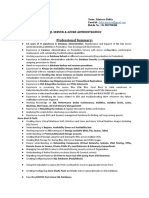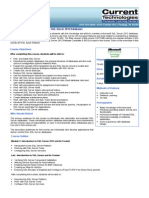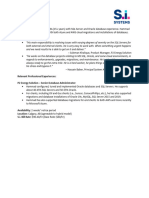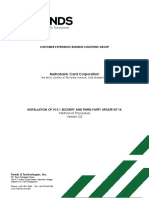0% found this document useful (0 votes)
154 views4 pagesMcsa SQL 2016 Database Administration Skills Measured
The document outlines the skills measured in the MCSA: SQL 2016 Database Administration certification exams 70-764 and 70-765. Exam 70-764 focuses on configuring data access and auditing, managing backups and restores, and managing and monitoring SQL Server instances. Exam 70-765 focuses on implementing SQL in Azure, managing databases and instances, and managing storage. Specific skills covered include deploying and configuring encryption, permissions, auditing, backups, high availability, and monitoring and tuning SQL Server performance.
Uploaded by
bhatroopa73Copyright
© © All Rights Reserved
We take content rights seriously. If you suspect this is your content, claim it here.
Available Formats
Download as PDF, TXT or read online on Scribd
0% found this document useful (0 votes)
154 views4 pagesMcsa SQL 2016 Database Administration Skills Measured
The document outlines the skills measured in the MCSA: SQL 2016 Database Administration certification exams 70-764 and 70-765. Exam 70-764 focuses on configuring data access and auditing, managing backups and restores, and managing and monitoring SQL Server instances. Exam 70-765 focuses on implementing SQL in Azure, managing databases and instances, and managing storage. Specific skills covered include deploying and configuring encryption, permissions, auditing, backups, high availability, and monitoring and tuning SQL Server performance.
Uploaded by
bhatroopa73Copyright
© © All Rights Reserved
We take content rights seriously. If you suspect this is your content, claim it here.
Available Formats
Download as PDF, TXT or read online on Scribd
/ 4
